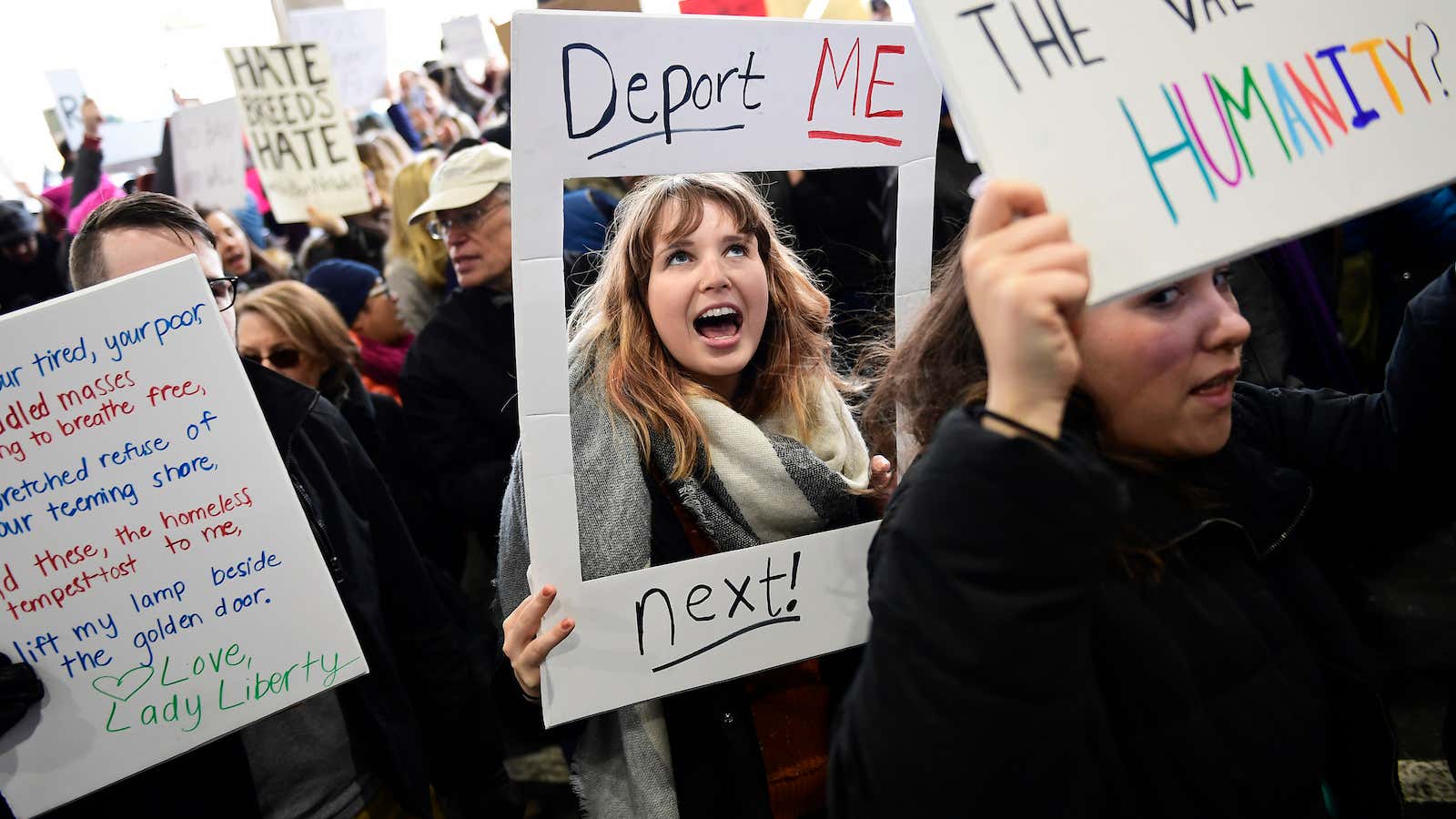For the single weekend it’s been in effect, US president Donald Trump’s immigration ban—an executive order forbidding citizens of seven majority-Muslim nations from entering the country—has tossed US universities into chaos.
A number of students and professors at US schools who briefly left the country, whether for research trips or winter vacations, are now unable to return to school; colleges from Harvard to Stanford are urging international students to postpone any travel, while also trying their (futile) best to help those stranded overseas.
But all this is only the immediate aftermath of the ban. The long-term consequences will be far greater.
Students in the US from the seven affected countries—Iran, Iraq, Libya, Somalia, Sudan, Syria, and Yemen—currently number into the tens of thousands, and most are concentrated in graduate programs, according to an analysis of global data from education researcher Rahul Choudaha. More than 12,000 graduate students in the US right now hail from those nations, making up three-quarters of all students from those countries.
What’s more: both groups have been increasing exponentially over the past decade, thanks to the US’s purposeful solicitations.
*OPT (Optional Practical Training) is a short period of time international students are allowed to work in the US to complement their education.
If Trump’s immigration ban holds, American graduate schools in particular stand to lose a great amount—and not just in the way of tuition and enrollment.
“The majority of these graduate students are in STEM [science, technology, engineering, and mathematics] fields, and many of them are at the doctoral level,” Choudaha tells Quartz. “So, the schools face a financial loss at one level—but a bigger one is the loss of talent, research, the contributions these students will make to the advancement of the field.”
Most students from these seven countries are unable to afford overseas programs on their own, Choudaha adds, meaning US universities have likely offered them partial or full scholarships just to come to campus.
A sudden choking-off of advanced STEM students from other countries does not bode well for the US’s technology aspirations and already-lagging engineering industries. Research studies have shown that the US’s top innovators, particularly those propping up Silicon Valley, tend to be immigrants.
